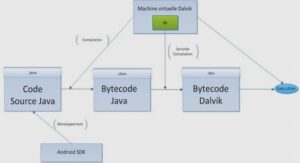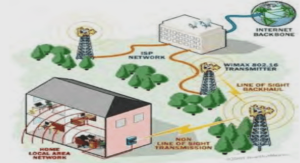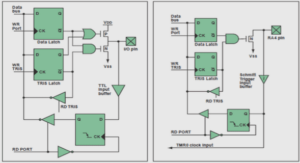Study of plasma fluctuations in conventional torch
Plasma torch
All measurements have been carried out at atmospheric pressure using a home-made plasma torch, shown schematically in Figure 2.1. It presents a similar conguration as the commercial F4 gun (Sulzer Metco, Switzerland). The torch consists of the nozzle with the variable diameter, d, which in the performed experiments will be chosen between 6 mm and 8 mm. The swirl gas injection is obtained by the injection ring with 16 holes of diameter 1 mm. The geometrical parameters of the torch are indicated in Figure 2.1. The volume of the cathode cavity, Vg, corresponds to the space limited by the injection ring up to the cathode tip. Vg and the distance between the end of cathode and the nozzle exit, Lk, are variable, what is shown in Table 2.1. It presents the congurations of Vg and Lk used in the experiments. It is possible to choose the cathode cavity volume between: Vg = 6 cm3 , which corresponds to the standard volume, Vg = 8.7 cm3 , obtained by removing the injection ring and Vg = 12.5 cm3 , volume of a cavity specially machined in the laboratory. The torch is power supplied with a current regulated source (SNMI, type P130, open circuit voltage 180 V), that provides the current up to 1000 A with a maximum voltage of 100 V. The electrodes cooling system consists of the pump which can be operated at the pressure 1.6 MPa. Table 2.1: Congurations of the volume of cathode cavity and of the distance between cathode tip and the nozzle exit chosen in the experiments. Vg (cm3 ) 6 8.7 12.5 Lk (mm) 30 29.5 The circulating water is delivered to the anode and cathode with an average ow rate of 17 l/min. The operation of the torch is characterized by mean values of the arc voltage (V) and the arc current. The following paragraphs dene the measurement methods of the process parameters.
Time-resolved measurements and data processing
The time-resolved measurements of the signals have been carried out using a data acquisition PCI 6132 computer card piloted by Labview software. This National Instruments card, which has 4 simultaneous recording channels (bandwidth 1.3 MHz, sampling rate 2.5 MS/s/channel, accuracy 14 bits), allows converting the signal from an analog to a digital form, by sampling and then digitizing it using an analog-todigital converter (ADC). The sampling process is of critical importance in this kind of measurement. The resulting signal waveform is highly dependent on the sampling frequency. If this frequency is too low, aliasing occurs and the original analog signal is incorrectly reconstructed, what is presented in Figure 2.2 b). To obtain the signal without aliasing, the Nyquist sampling criterion should be met. It shows that samples taken at a frequency, fs, at least twice the highest frequency content of a signal, fmax, are sucient for a correct reconstruction. In practice, fs should be greater than fmax to obtain the original analog signal reconstructed exactly, what is presented as follows: fs > 2fmax. Page 80 Chapter 2 : Study of plasma uctuations in conventional torch Figure 2.2: Results of the sampling frequency choice: a) original signal, b) sampling frequency below Nyquist frequency (resulting signal with aliasing), c) sampling above Nyquist frequency (no aliasing occurs) [68]. The signals have been recorded by LabView program for further data processing, e.g. the statistical analysis of the signals. To achieve the reliable values the results are the average of 10 measured signals. The statistical analysis of the measured data gives the information about: – Mean value Considering the recorded data as X the mean value is denoted by X and dened by the following formula: X = 1 n Xn i=1 Xi (2.1) where n = 6500 samples in the measurements performed in this work. To obtain the reliable values for each operating conditions the data contains 10 measurements. Therefore, the nal mean value, Xf, is presented as follows: Xf = 1 10 X 10 i=1 Xi (2.2) Page 81 Chapter 2 : Study of plasma uctuations in conventional torch – Variance The variance of the data set X consisting of n samples is dened as hs 2 i and given by the equation: hs 2 i = 1 n − 1 Xn i=1 h (xi − X) 2 i (2.3) – Standard deviation The positive square root of the variance, hs 2 i, is denoted by σ and presented as follows: σ = p hs 2i (2.4) – RMS (Root Mean Square) The root mean square of a sequence X is determined as the positive square root of the mean of the square of the input sequence. The formula used to compute the RMS value is given by the equation: RMS = vuut 1 n Xn−1 i=0 Xi 2 (2.5) However, the analysis of the signal in the time domain is generally not sucient. To study all information, which signal contains, it is necessary to transform this signal to the frequency domain, what can be done by the Fourier Transformation described in the following section.
FFT method
The strongly optimized algorithm, Fast Fourier Transformation, has been chosen because of its shorter time of computation. FFT reduces the number of calculations needed for N points to N ·log2 N comparing to N2 of the DFT (Discrete Fourier Transform). Therefore, the following paragraph presents the use of FFT method. According to Fourier theory any function f(x) with period 2π (f(x) = x + 2π) can be described in terms of an innite sum of sines and cosines, as follows: f(x) = a0 2 + X∞ m=1 (amcosmx + bmsinmx) (2.6) Page 82 Chapter 2 : Study of plasma uctuations in conventional torch Where a0, am and bm are the Fourier coecients dened by: am = 1 π Z π −π f(x)cosmxdx (2.7) bm = 1 π Z π −π f(x)sinmxdx (2.8) a0 = 1 π Z π −π f(x)dx (2.9) The result of the FFT analysis is an array of complex numbers, amplitudes and phases, corresponding to elementary harmonic oscillations into which the signal may be decomposed. The amplitudes correspond to the power spectrum, which shows the amount of power in a given frequency band or in a given line. The frequency spectrum can be used as a tool to distinguish dierent regimes of periodicity, chaos and noise. In the frame of this thesis, Fast Fourier Transform has been applied under LabView platform. It provides a complete set of tools to perform Fourier and spectral analysis.
Application to arc voltage
The measurement of the arc voltage signal has been carried out using a data acquisition PCI 6132 computer card piloted by Labview software, as has been presented above. This PCI 6132 card consists of 4 simultaneously sampled analog inputs limited by the level voltage of ±10 V. Therefore, to make the measurements of the arc voltage the bridge circuit has to be implemented. The resistors R1 and R2 are respectively 2.16 kΩ and 48.93 kΩ, what gives the value of divider equals 23.65, obtained by using the following equation: Uout = R1 R1 + R2 Uin (2.10) The measurement of the circuit has given the value of divider equals 22.86. The dierence between the calculated value of divider and the measured one is caused by the heat dissipation of the resistors, what results in dierential resistances. As has been presented above, the sampling process is crucial in the time-resolved measurements. Because of fast variations of re-arcing phenomena in the plasma torch (up to 50 µm) the sample rate of 320 kS/s during 0.2 s has been chosen. It gives a sampling frequency of 160 kHz which meets the Nyquist sampling criterion and the frequency resolution equals to approximately 5 Hz.




